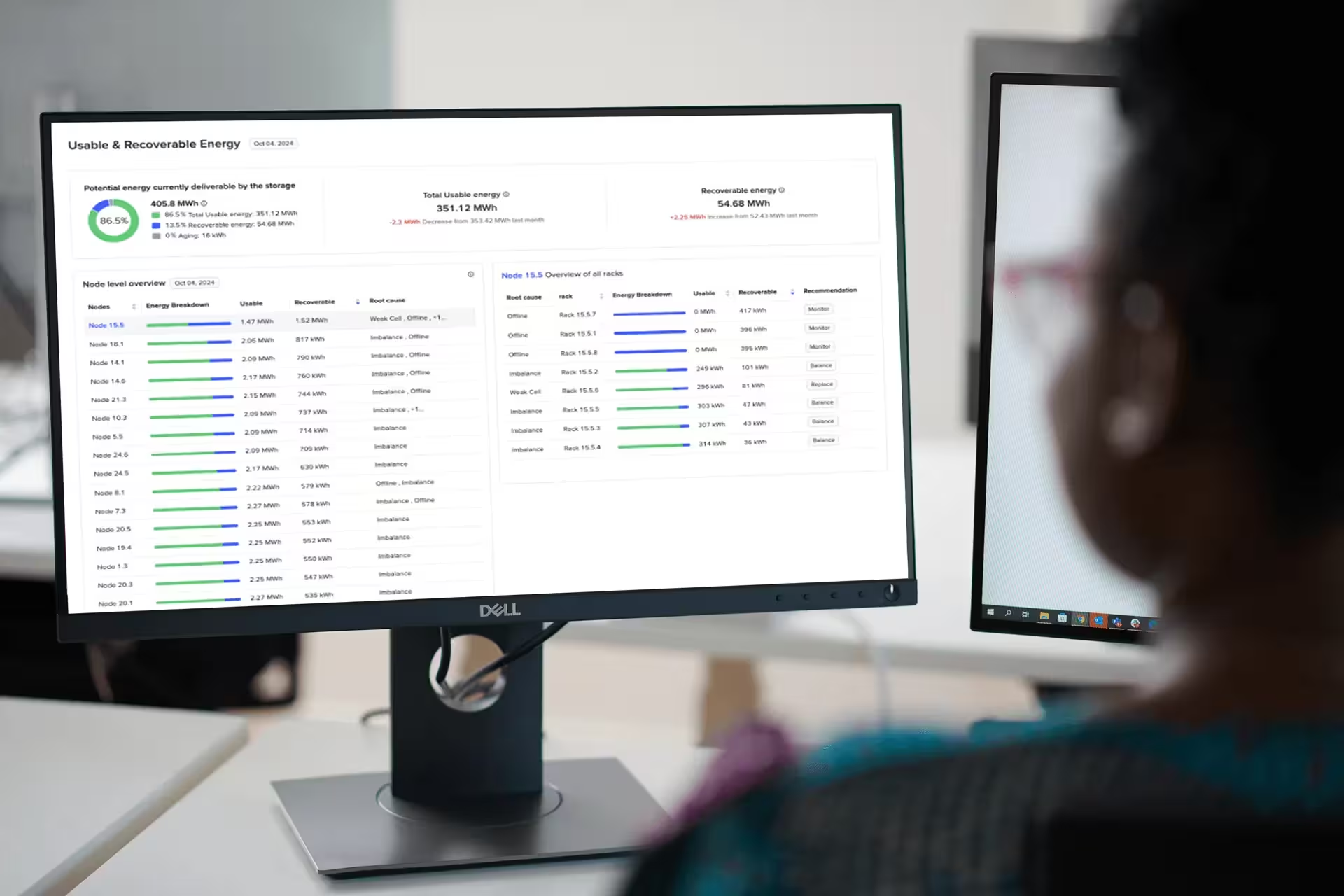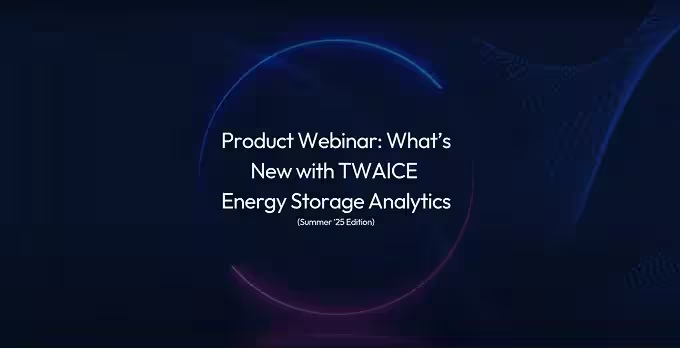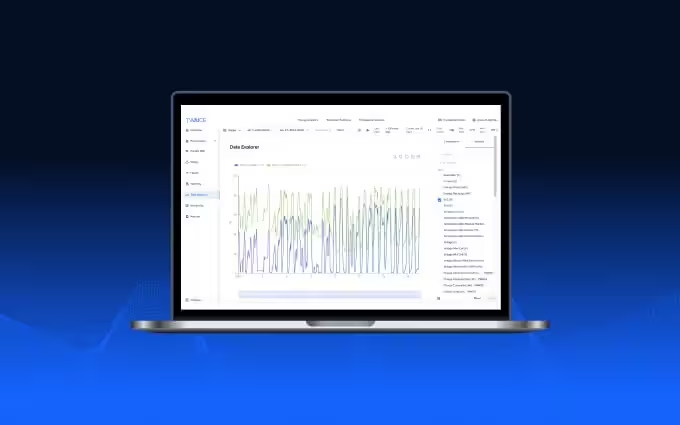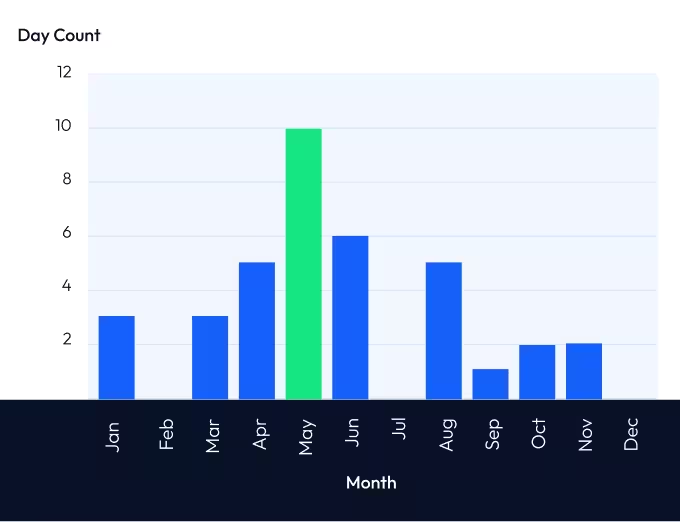How TWAICE’s Usable Energy Makes System Availability More Transparent
Availability is a widely used term in the battery energy storage industry and is fundamental to operations. It is often the first metric asset owners check when they see revenue decline. However, simply knowing the system’s availability does not provide any insights into how it can be improved. The real challenge remains: identifying the root cause of poor availability and knowing what actions to take.

Improving availability has direct financial benefits. An analysis from Modo Energy from 2023 shows that an additional 1% increase in availability can generate an extra $2k/MW/year in UK and ERCOT markets. "When we see revenue going down, the first thing we do is look at availability", summarized an asset manager at a US-based IPP.
However, simply knowing the system’s availability does not provide any insights into how it can be improved.
The Challenge: Availability Is a Black Box
There are many different definitions of availability for battery energy storage systems. One commonly used definition is basing it on the energy throughput of system components over a given period. The logic is simple:
- Operational components contributing energy are counted as “available”.
- Non-operational components with no significant energy throughput are classified as “unavailable”.
This definition is widely used, including by the American Clean Power Association, because it is simple to understand, easy to communicate and useful for contract compliance.
However, it does not explain why availability is low or which specific issues are reducing system performance. For example, a battery module with cell imbalance issues might technically be available, but it is unable to discharge as much energy as it should.
The TWAICE Approach: Differentiating “System Availability” And “Usable Energy”
Rather than trying to define a single availability metric that captures both operational status and performance, we at TWAICE separate these concepts into two distinct KPIs:
1. System Availability
2. Usable Energy
By keeping these two KPIs separate, we ensure clarity and avoid the limitations of trying to merge contractual availability with performance metrics.
System Availability: A Key Metric for Warranties and Guarantees
System Availability is primarily used in the context of warranties and contractual guarantees. It is expressed in percentage points (%) or megawatt-hours (MWh) and is evaluated at the system level. The key question it addresses is:
"Is the system performing as defined in its warranty contracts?"
In this case, we define System Availability using the industry standard as described above, using a binary classification at the component level (e.g., string or rack level).
- A component is considered operational (i.e. available) when it is contributing to the system's energy throughput.
- A component is considered non-operational (i.e. not available) when it is not contributing to the system’s energy throughput, regardless of the reason.
This simplified approach provides a clear overview of a system’s operational state. By aggregating availability from the component level to the system level, it ensures a structured and standardized assessment.
System Availability can be viewed in the TWAICE Warranty Tracker, helping asset owners and operators to understand whether their system is operating within the constraints of the performance guarantees.

Usable Energy: A Performance and Revenue-Driven Metric
While System Availability focuses on contractual compliance, Usable Energy is crucial for performance optimization and revenue generation. Usable Energy is expressed in percentage points (%) and megawatt-hours (MWh) and is evaluated at multiple levels, including the system, node, and string level.
The primary question it answers is:
"How many MWh is my system capable of delivering today?"
Usable Energy is highly dynamic and influenced by multiple factors. It reflects how much energy can be actively charged or discharged from the system and how much energy is recoverable.
Factors Affecting Usable Energy
Usable Energy is influenced by several key factors, some of which can be actively managed to recover lost energy:
- Weak cells may limit performance due to manufacturing differences, defects, or abnormal degradation. Identifying and addressing weak cells can restore energy.
- Imbalances in the system occur when the state of charge (SoC) varies significantly across components. Since individual, highly imbalanced components can limit overall system performance, resolving imbalances can help recover energy.
- Non-operational components reduce Usable Energy. If strings or racks are down, restoring them can immediately improve the Usable Energy.
- Aging reduces energy capacity over time. This loss is irrecoverable and results from the unavoidable degradation of battery cells.
Recoverable Energy
Recoverable Energy represents the energy that can be regained through corrective actions. This includes:
- Offline components that can be reconnected or replaced
- Imbalances that can be corrected through better battery management
- Underperforming, weak cells that may require replacement
By distinguishing between recoverable losses and permanent losses, asset owners get a much clearer picture of what actions will directly improve system performance.

Key Takeaways: Why This Distinction Matters
- System Availability is primarily a contractual metric, ensuring that the system meets its contractual obligations.
- Usable Energy is a performance and revenue metric, focusing on how much energy can be utilized.
- Recoverable Energy can be regained by fixing non-operational components, resolving imbalances, and addressing weak cells.
- Aging-related energy loss is irreversible, but understanding it helps in long-term asset planning, for example, augmentation strategies.
Availability, while useful for contractual definitions, can be a black box—it tells you what’s wrong but not why. Usable Energy and Recoverable Energy bring transparency to the root causes of underperformance. Learn more about how to use Usable Energy and Recoverable Energy in this article.
Sign up for the next live group demo and learn how TWAICE can transform your BESS operations. In just 30 minutes, you’ll get a demo of key features and use cases, and engage with our product experts for a live Q&A.



.avif)

